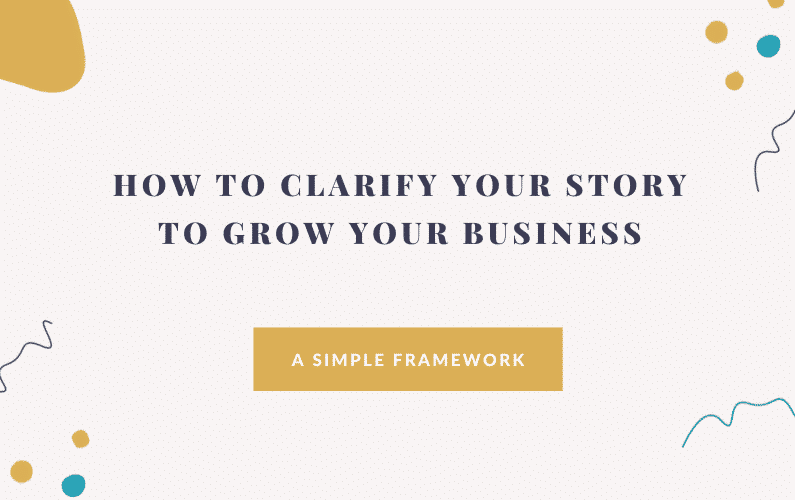
The human brain is wired for stories, which is why we’ve been telling them for millennia. Stories make people feel something and if done well, inspire them to act. You’ve probably noticed you have a hard time remembering facts, figures, hell, even names sometimes. But – I bet you have a much easier time remembering a great story though. That’s exactly why storytelling is so important for business – it helps your audience remember you, relate to you, and inspires them to take action.
So what makes a great story? It’s actually not that complicated – you don’t need to be a story wizard to resonate with those you seek to influence. You just need to understand your audience and the basic architecture of a solid story. At the end of the day, a story is just an account of a character in a situation facing certain choices – everyone is innately capable of telling them.
Know your customers’ challenges and desires
Before you tell any story, you need to understand who you’re telling it to and what they care about. The goal of any good story is to move an audience and inspire them to act in some way, like making a purchase. If you want to move your audience to buy from you, you need to understand their pain points and desires. Armed with that information, you’ll be able to reverse engineer your story so you can show them that their challenges are surmountable and their goals are attainable.
That means you need to know where your customers currently are and where they’re trying to go. I like to think of this as understanding your customers’:
- Hell: what are they trying to move away from?
- Heaven: what are they trying to move towards?
Think of their hell as their current set of circumstances and their heaven as their ideal outcome or where they’d like to be. What needs to happen to get them from hell to heaven – from their current set of circumstances to their ideal outcome? What challenges are they facing and what action(s) do they need to take? How does your business fit into this narrative? Can you empathize with their pain points and show how your solution leads to their ideal outcome?
Use the 5 Cs
There are five key components that make up a great story. Bernadette Jiwa refers to them as “The 5 Cs Story Structure”. If you want your story to flow, make a point, and resonate with your audience, you need to keep the 5 Cs in mind.
- Context: the backstory or present circumstances of the main character or “hero”.
- Catalyst: an event that changes something in the hero’s world.
- Complication: the problem and choice the hero is faced with.
- Change: the transformation that occurs once the hero decides on a path and plan to overcome the problem.
- Consequence: the resolution – how the hero’s character, fate, world, or worldview changed because of what happened.
Now that we have the architecture down, let’s see how it’d play out in an example.
Let’s pretend you have a meal delivery business. Let’s also pretend you were a busy professional that aspired to eat healthily but never had the time to shop or meal prep. While we’re at it, let’s also pretend you’re environmentally conscious and wanted to eat organic and buy sustainable products.
Here’s how the architecture of your story might look from a 30,000 ft view:
Context: I was killing it at my job, but the 40+ hour work weeks meant I never had time to grocery shop, let alone meal prep. This led me to eat out a lot, but it bothered me because the food wasn’t organic, let alone healthy, and all the takeout boxes were bad for the environment.
Catalyst: After putting on 20 pounds and experiencing adrenal fatigue, I knew I couldn’t go on like this. I wanted to be able to eat wholesome meals without having to spend whatever free time I had planning, shopping, and cooking. That’s when I decided it was time to invest in a meal delivery service.
Complication: Once I did some research, what I found didn’t sit well with me. None of the options available to me were sourced from local farmers, certified organic, and the packaging they were delivered in was again, bad for the environment.
Change: That’s when I realized if I was having this problem as a successful professional, so were others. So I decided to launch [Company Name]. I invested heavily in building partnerships with local farmers, creating wholesome recipes made from organic ingredients, and sourcing compostable materials for the meals the be delivered in.
Consequence: A lack of time shouldn’t mean a lack of choice and a busy career shouldn’t mean being confined to unhealthy eating options that aren’t good for the environment. People should be able to focus on the work they love, eat healthy, organic, wholesome food, and leverage their purchasing power to do right by the environment.
Let your customers see themselves in your story
Odds are if you’re a busy professional who’s struggled to invest the time to eat healthily and sustainably, but care about the environment and your purchasing power, this story, even at a very high level, resonated in some way. You probably saw yourself in the hero or founder’s story.
This is a key aspect of effective storytelling for business: let your customers see themselves in your story.
With this example, if your audience is a group of busy professionals who care about their health and the environment, who aspire to eat wholesome food and live healthily, but have struggled to do so, your story shows them another way of achieving their goals – by purchasing this meal delivery service.
When you understand your audience’s challenges and goals, their values, and can share a story that inspires them to act by showing them you understand and empathize with their problem while also demonstrating that their desired future is attainable, you’ll be able to use storytelling to grow your business. When you focus on these things, you can cut out the fluff or the excess from your story and by following the 5 C’s, you’ll have a story architecture that clarifies your message and drives results.
Sign up to get weekly insights on how to create your version of success
Join the hundreds of founders and leaders already getting them in their inbox every week. Word on the street is they are insightful, entertaining, and thought-provoking emails.



Thank you so much Arielle ! I cannot thank you enough for writing this. Thank you
Thank you so much for your kind words Karina! Good luck with all your endeavors! xo
This was really helpful thanks so much!!
I’m so glad Kristen!
Thank you so much this is so great!
I’m glad it was helpful for you Jana!